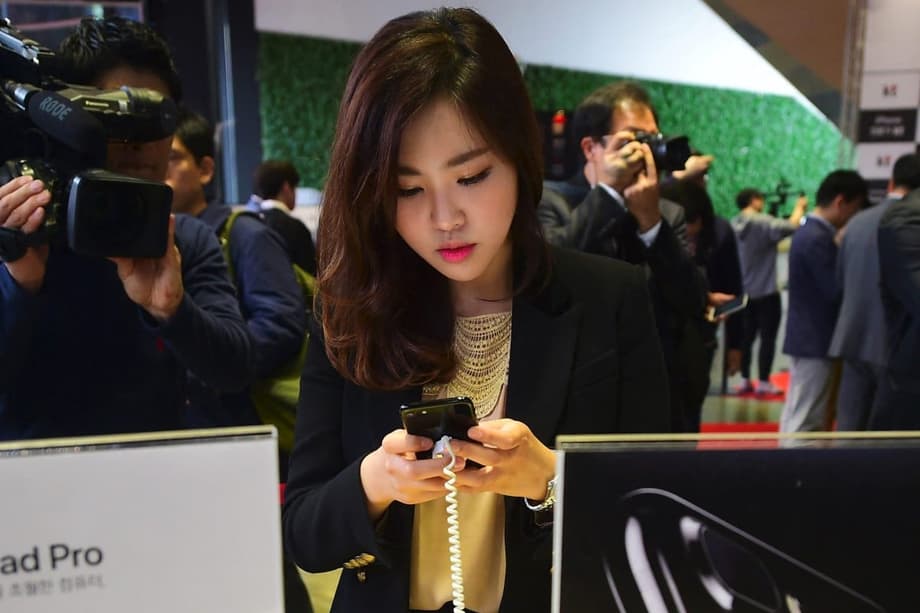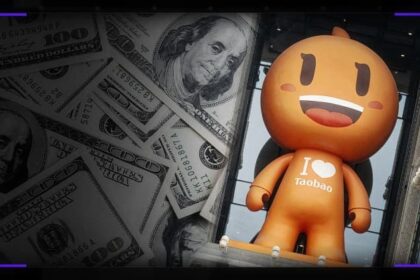A youth market moving in a different direction
In a country that built one of the world’s most valuable electronics brands, a generational shift is on display. At a major tech event in Seoul, Samsung’s top executive looked out at the audience and saw a sea of iPhones. The image captured a tension that has been growing for years in South Korea. Gen Z, the consumers who will shape the next decade, increasingly reach for Apple, even as their parents and grandparents remain loyal to Samsung.
Samsung Electronics chairman Lee Jae-yong put that moment into words at the event, highlighting how visible Apple devices have become among young professionals and students in Seoul.
“Why are there so many iPhones here?”
Survey data backs up what you can see in youth districts like Hongdae, where Apple stores are packed on weekends. Gallup Korea has reported a pronounced split by age: among South Koreans aged 18 to 29, iPhone use is roughly two times Samsung’s share, while Galaxy dominates in older age groups. In the 40s, Galaxy use is several times higher than iPhone. For those in their 50s and beyond, Samsung’s lead is even wider. The arrival of Apple Pay in 2023 helped lift Apple’s appeal among younger consumers, even as Samsung Pay remains deeply embedded in daily life for many Koreans.
Why do young Koreans choose iPhone?
Ask students and young professionals in Seoul why they carry an iPhone and the answers cluster around identity, usability, and the devices they already own. Style matters. So do cameras and creator tools. The pull of the Apple ecosystem across iPhone, iPad, Mac, Apple Watch, and AirPods is strong once a user steps inside it. Friends and classmates influence each other, and that network effect compounds over time. Messaging habits in Korea are different from the United States, since KakaoTalk is universal, yet Apple’s services still matter for photos, files, and video calls.
Identity and status in a K culture era
The iPhone functions as a style choice as much as a communication device. Minimal hardware design and a familiar user interface fit the clean aesthetic of Seoul street fashion, while cases and accessories act as personal statements. Owning an iPhone signals taste and global savvy to some buyers in their teens and twenties. That perception becomes self reinforcing when most in a circle carry the same brand. The scene in Hongdae, where Apple’s staff spend weekends handling long queues, sends a message of momentum to anyone passing by.
Peer pressure is real in classrooms and offices. A 26 year old teacher living near Seoul described the look she gets when she pulls out a Galaxy among friends her age.
“I’ve rarely seen anyone my age use a Samsung phone. So, when they see my Samsung Galaxy, everyone asks why I don’t use an iPhone.”
The campus ecosystem effect
Among students, the ecosystem draw is powerful. Many already own iPads for note taking and study apps, or use MacBooks in design and engineering programs. iPhone ties those devices together in ways that reduce friction. AirDrop makes moving photos and files fast. iCloud keeps notes, calendars, and passwords synced. AirPods pair instantly. Once set up, the daily flow feels smooth and predictable.
That integration makes switching harder. In Gallup Korea’s polling, a large majority of respondents say they intend to stick with their current brand. It is not only habit. It is also the cost in time and attention that comes with moving photos, messages, and app data to a new platform. FaceTime and iMessage are less central in Korea than in the United States because KakaoTalk dominates texting. Even so, Apple’s continuity features, backups, and family sharing nudge users to stay put.
Cameras, creator tools, and usability
South Korean Gen Z lives on video and social platforms. That pushes camera quality to the top of the priority list. iPhone is perceived by many as a safe choice for consistent photos and video that look good out of the box. Stabilization, natural skin tones, and quick access to editing tools inside the Photos app reduce the steps needed before posting. AirDrop is still a favorite for moving clips between friends or from phone to laptop during a late night project.
Battery life, performance, and long software support also play a role. iPhones typically receive iOS updates for many years. Samsung has raised its own update commitments in recent product cycles, so both brands now offer a long runway for security and features. The experience on either platform is polished, but among younger users, the perception that iPhone will handle photos and videos with fewer tweaks remains sticky.
Payments and daily convenience
Payments are part of the story. Apple Pay arrived in Korea in 2023, and acceptance has grown across retail chains and transport. For Apple loyalists, the ability to tap to pay with iPhone or Apple Watch removes one more reason to carry a different device. That said, Samsung Pay is still deeply rooted. It has been around for years, supports a wide range of terminals, and integrates with local services Koreans use every day, from transit cards to loyalty programs.
Practical features can tip the balance. Call recording, a feature that many workers use to confirm delivery details or record business calls, is built into Galaxy but not iPhone. Some younger users who tried iPhone end up switching back for that one function, along with conveniences like an always on recorder, broader local banking integrations, or direct transit support in their city.
Resale value and total cost
Top tier smartphones are expensive in Korea, whether Apple or Samsung. For the same storage, list prices are often close, with iPhone sometimes a bit higher. Many buyers think in terms of monthly installments and trade in values. iPhones tend to hold resale value well in the used phone market, which can narrow the long term cost. On the other hand, Samsung often counters with aggressive promotions, bundle deals, and strong trade in offers that make a Galaxy flagship or a midrange model feel like the better bargain at checkout.
How Samsung is competing for Gen Z
Samsung has not surrendered the youth market. Its design push is visible in the Galaxy Z Flip, a compact foldable that has become a common sight in cafes and on the subway, especially among women in their twenties who like hands free camera angles and pocket friendly form factor. The company has also introduced very slim designs and expanded color options to shed the old image of Galaxy as a phone for middle aged men. Retail theater matters too. Samsung opened a showcase store in Gangnam branded as a playground for millennials and Gen Z, a short walk from Apple’s newest location. The message is simple, we are making Galaxy fun again.
Features are the other lever. Galaxy AI has brought handy tools such as Circle to Search with Google, live translation during calls, and voice to text transcription. Those are everyday conveniences with clear value on campus and at work. Samsung Pay still enjoys wide acceptance and deep local integrations. Call recording and customization remain advantages for Android power users. Price also counts. With strong carrier subsidies, seasonal promotions, and trade in bonuses, Samsung can make its flagships and midrange phones feel accessible. For the same storage tier, Galaxy often comes in slightly cheaper than a new iPhone at list price.
Are tastes starting to shift again?
Apple still leads among people in their twenties, but the gap is not fixed in stone. Gallup Korea’s recent polling points to an Apple lead among 18 to 29 year olds that has eased from peak levels, with Samsung gaining ground in that group. Among some young women, intent to choose Samsung next has ticked higher compared with last year. Reasons are practical. Galaxy’s AI features improve everyday tasks, call recording is useful, and promotions help with price. At the same time, Apple’s status appeal looks strong with older consumers in their forties, a group that has grown more trend conscious and willing to pay for premium brands.
Design chatter matters in this swing. New iPhone models face more scrutiny on social media, where some users say recent changes feel incremental or that AI additions do not change daily habits. That criticism does not flip the market on its own, but it makes fence sitters more receptive to Samsung’s message. Samsung, for its part, is working to prove that a Galaxy can be both cool and convenient, with products like Flip and a marketing tone that leans into fashion and fun.
A global pattern with local twists
South Korea is not alone. Across many markets, younger buyers lean toward Apple in the premium segment. In India, for example, research on Gen Z shows Samsung still enjoys broad trust and reach, yet Apple is gaining with women, first time buyers, and younger consumers outside big cities. The pattern is similar to Seoul’s youth districts. iPhone signals identity and reliability, and buyers are more willing than before to save for a device that feels like part of their lifestyle.
Apple is also investing to keep its brand top of mind in Korea. The company has expanded its retail footprint and scheduled new category launches, such as the Apple Vision Pro with M5 chip, for the local market. Big stores and headline products create buzz that spills over into the iPhone line. Longtime brand builders argue that this is the point. Strengthen the brand each year, and the sales will follow. Berkshire Hathaway chairman Warren Buffett once put it in plain language.
“Make sure the brand is stronger at the end of the year than it was at the beginning.”
What to Know
- Gallup Korea data shows a wide generational split: iPhone leads among 18 to 29 year olds, while Galaxy dominates among older age groups.
- Apple Pay’s 2023 launch in Korea increased Apple’s appeal to young consumers, though Samsung Pay remains deeply embedded in daily life.
- Identity, cameras, and the Apple ecosystem pull many Gen Z users toward iPhone, helped by AirDrop, iCloud, and easy pairing with iPad, Mac, and AirPods.
- Practical features keep Samsung in the fight with Gen Z, including call recording, live translation, and broad local payment integrations.
- Galaxy Z Flip and design focused models target younger buyers who want style and compact form factor.
- Promotions and trade in offers make Galaxy compelling on price, while iPhone’s resale value helps offset higher list prices for some buyers.
- Recent polling suggests Samsung is gaining share among people in their twenties, even as Apple remains the leader in that age group.
- Globally, Gen Z tends to pick iPhone in the premium segment, but local habits, services, and pricing shape choices country by country.












